A married couple, Victoria and Dmytro Radchuk, left their business in Lutsk to create a sheep farm. In 2016, they moved to the area near the village of Povcha, where they set up a green tourism farmstead called “Khutir Kasen” (Kasen hamlet). Previously, there were only a handful of old houses and impassable thickets in the area that had to be cleared so they could start their own farm here. The farmstead, located among the slopes of the picturesque Povcha Upland, is visited by lovers of both competitive cycling and a relaxing holiday in nature.
The “Khutir Kasen” farmhouse is located near the village of Povcha, which lies in the centre of Povcha Upland in Volyn (a historic region, partially located in western Ukraine – transl.). This upland is distinguished by its rugged landscape with steep slopes, hills, ravines, and chalky outcrops. From certain heights, If looking through binoculars , one can view the city of Lutsk to the north and the domes of the Pochaiv Lavra (an Orthodox male monastery in Pochaiv, Ternopil Oblast; the greatest Orthodox shrine of Volyn – Transl.) to the south. The farmstead is located at the foot of the Kolykha Mountain (also called Khokhlytsia – Ed.), which is the highest point of this Upland.
The Radchuks built their abode on the site of an old hamlet. They built a house, then arranged a terrace and guest rooms.
— According to legends, this hamlet is about 400 years old. It was set up for the workers quarrying stones in the local forest. The Dubno Castle was built from the stones extracted here. At the time, there were around 40 residential courts where people of different nationalities lived.
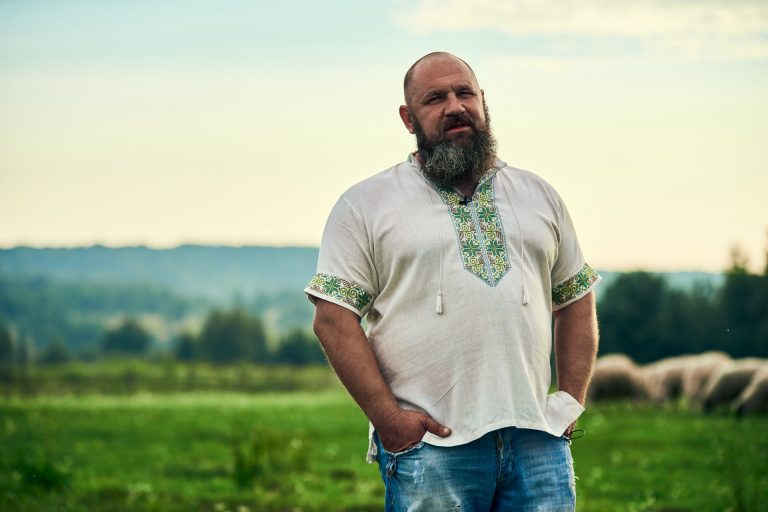
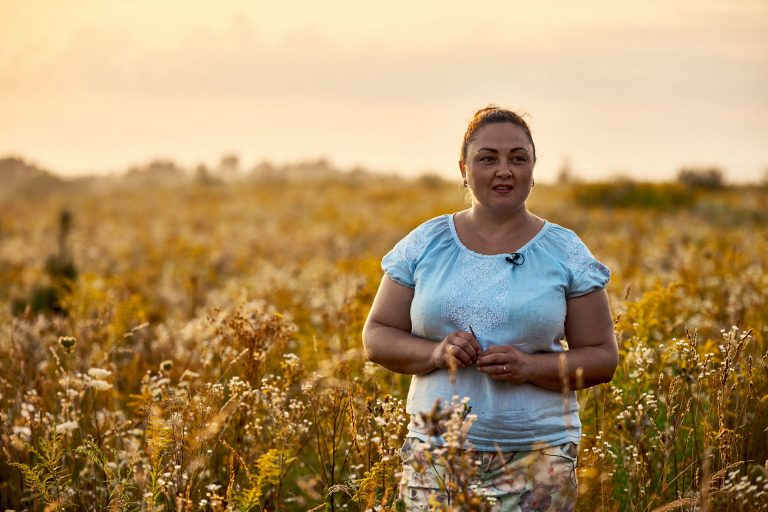
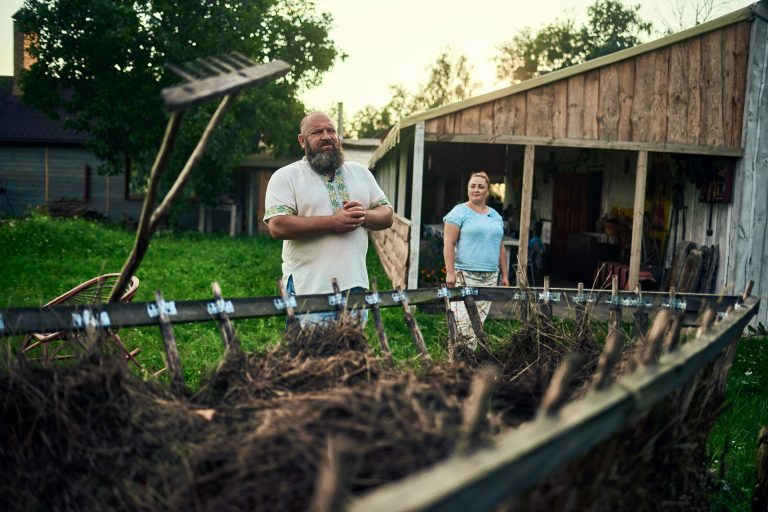
slideshow
Dmytro and Victoria bought the lands where the farmstead now stands. At first, they lived in a tent and uprooted the thickets that had invaded everything around here.
— Almost no one was left here. There was a single old wooden house (currently, we have a steam bath there). The house is up to 100 years old, we preserved it, having changed only what was old and neglected. Our closest neighbors have already died. And so, that house is waiting for its new owner, since there are no heirs to it. We wish the hamlet would be revived and live again, so people could return and start working here.
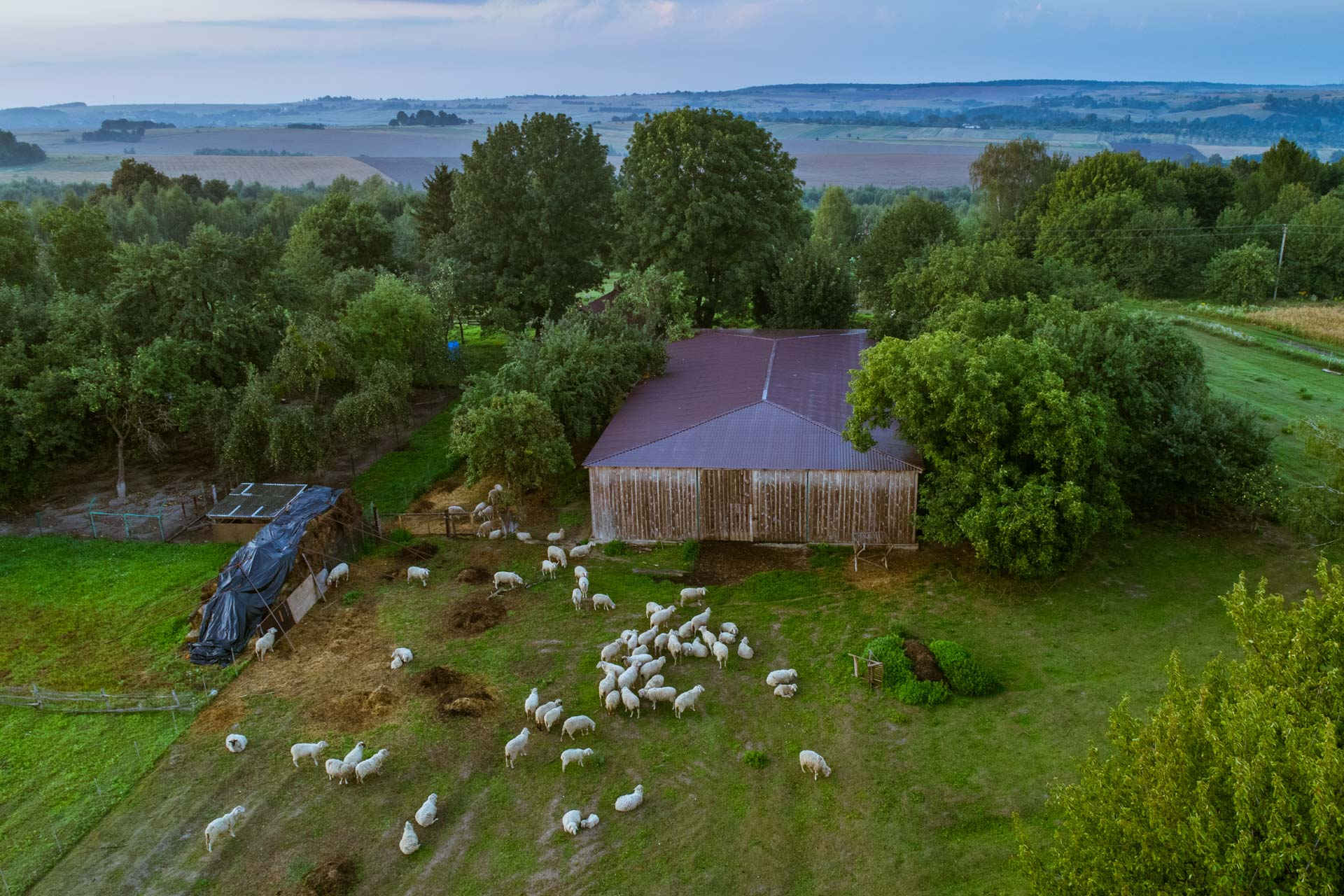
Victoria says that the farm grew out of their dream of breeding sheep and being engaged in green tourism. The couple spent many years living and running their own business in Lutsk. Having left the city and their entrepreneurial activity, the Radchuks came to Povcha and found a place that would be nice for sheep herding here.
— We didn’t want to move far from Lutsk, and a very beautiful place here inspired us. We looked at farmsteads abroad and travelled a lot around Ukraine. Frumushyka-Nova is a great example of green tourism (find more information about Frumushyka-Nova here – ed.). We visited it a couple of times and talked to local experts.
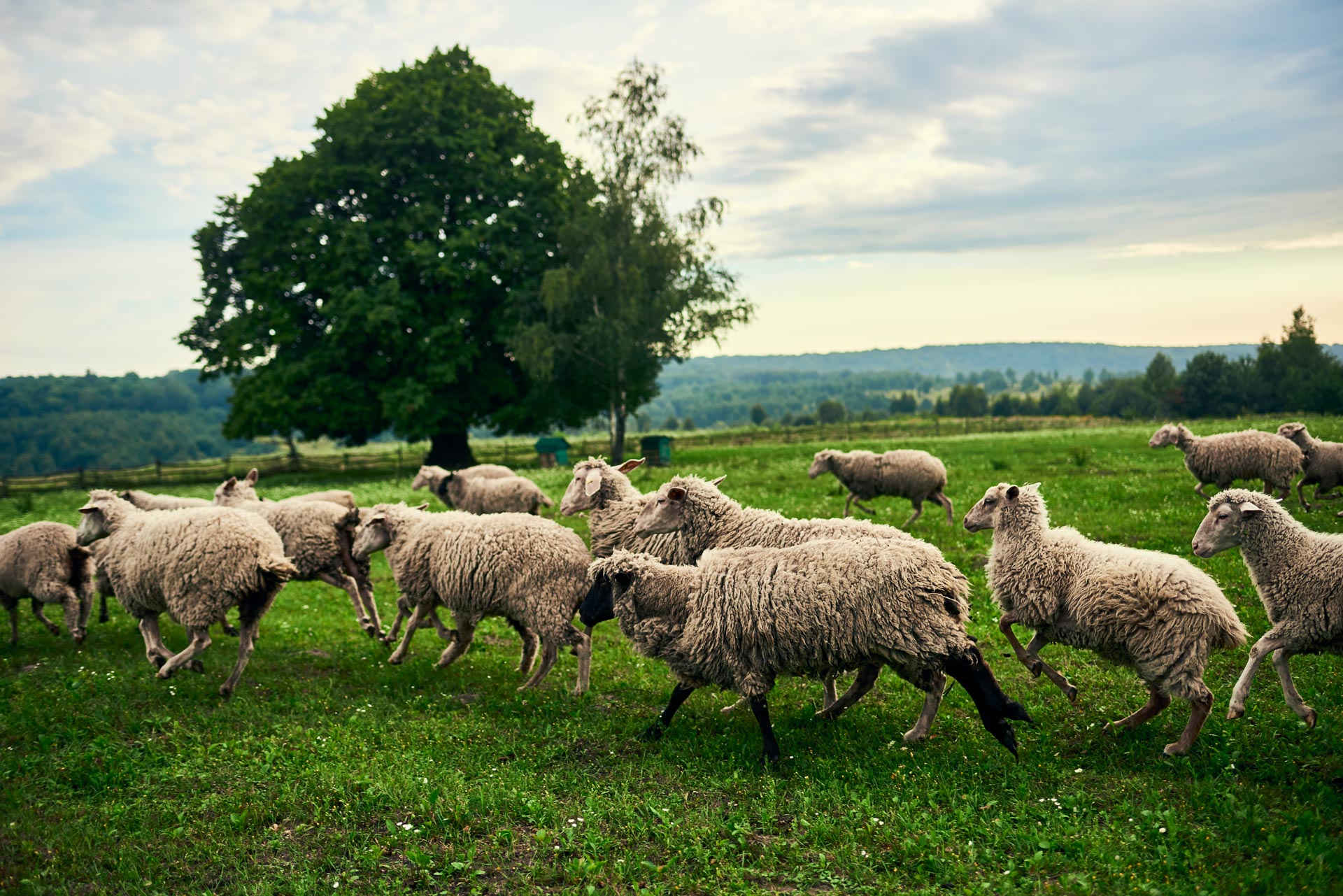
Sheep and curly pigs
Dmytro and Victoria started out with a flock of sheep – only 10. Today, they have over 70 Merinos ( a widely prized breed of sheep – transl.). The owners say these sheep have very soft and warm wool. The Radchuks use this wool to produce blankets and pillows for their farmstead and for sale.
According to Victoria, there once was a large farm that had 4,5 thousand sheep near the village of Povcha. When they moved there and opened the farm, the couple was given a pair of antique forged scissors that were once used to shear the sheep.
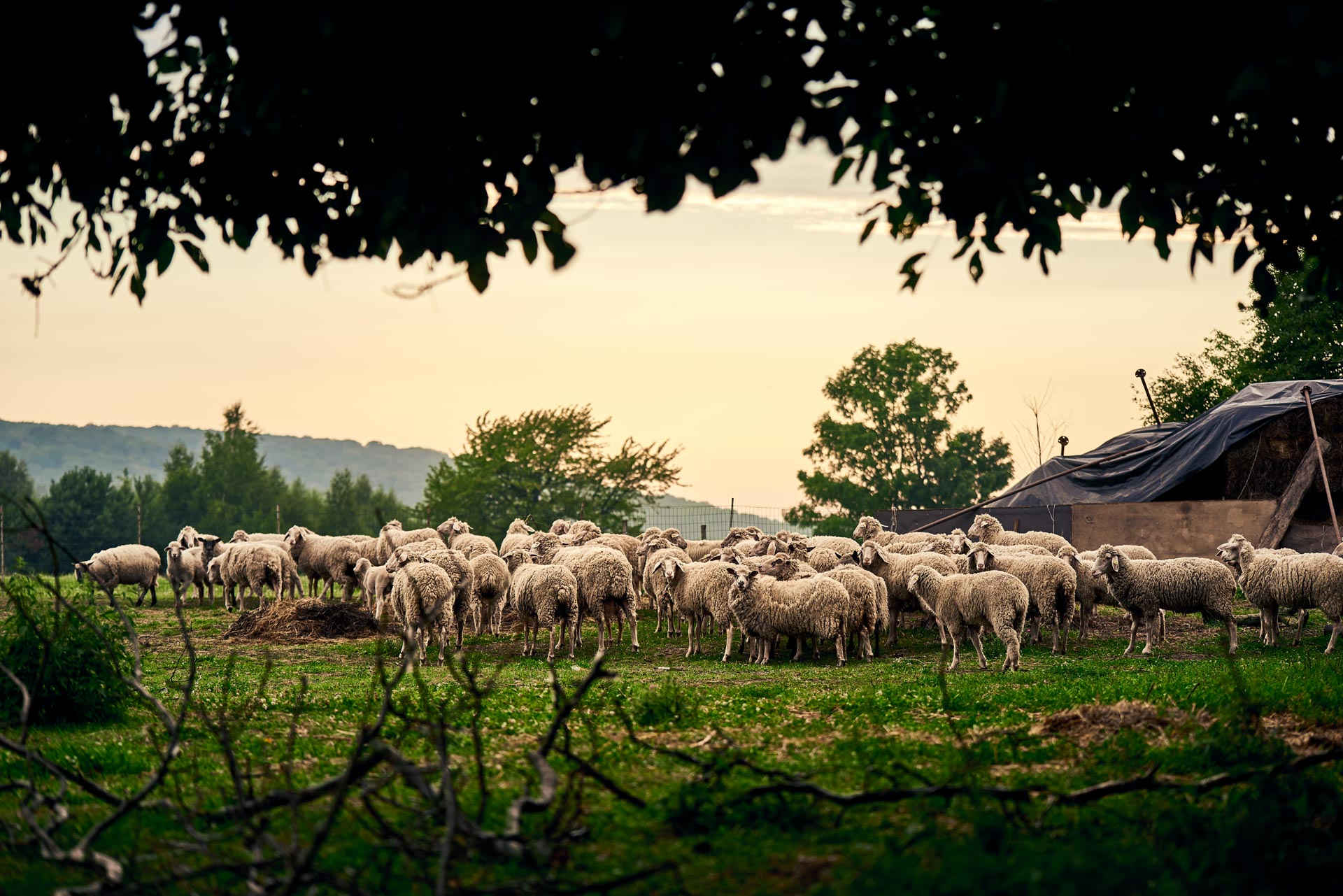
— We tried to shear with those scissors, and it seemed that it would be faster to just singe the wool with a blow torch than to cut it. After just a few moves my hands felt like they might fall off. I have no idea how someone could shear a whole sheep with those scissors, especially since it won’t just stay still. Of course, no one does it nowadays. We do this with an electric machine, it’s very fast.
At the Kasen hamlet, guests are offered a “sheep therapy” package: food (organic mutton chops, sheep milk products, sheep fat), sheep wool products, and of course a chance to feed and pet the animals.
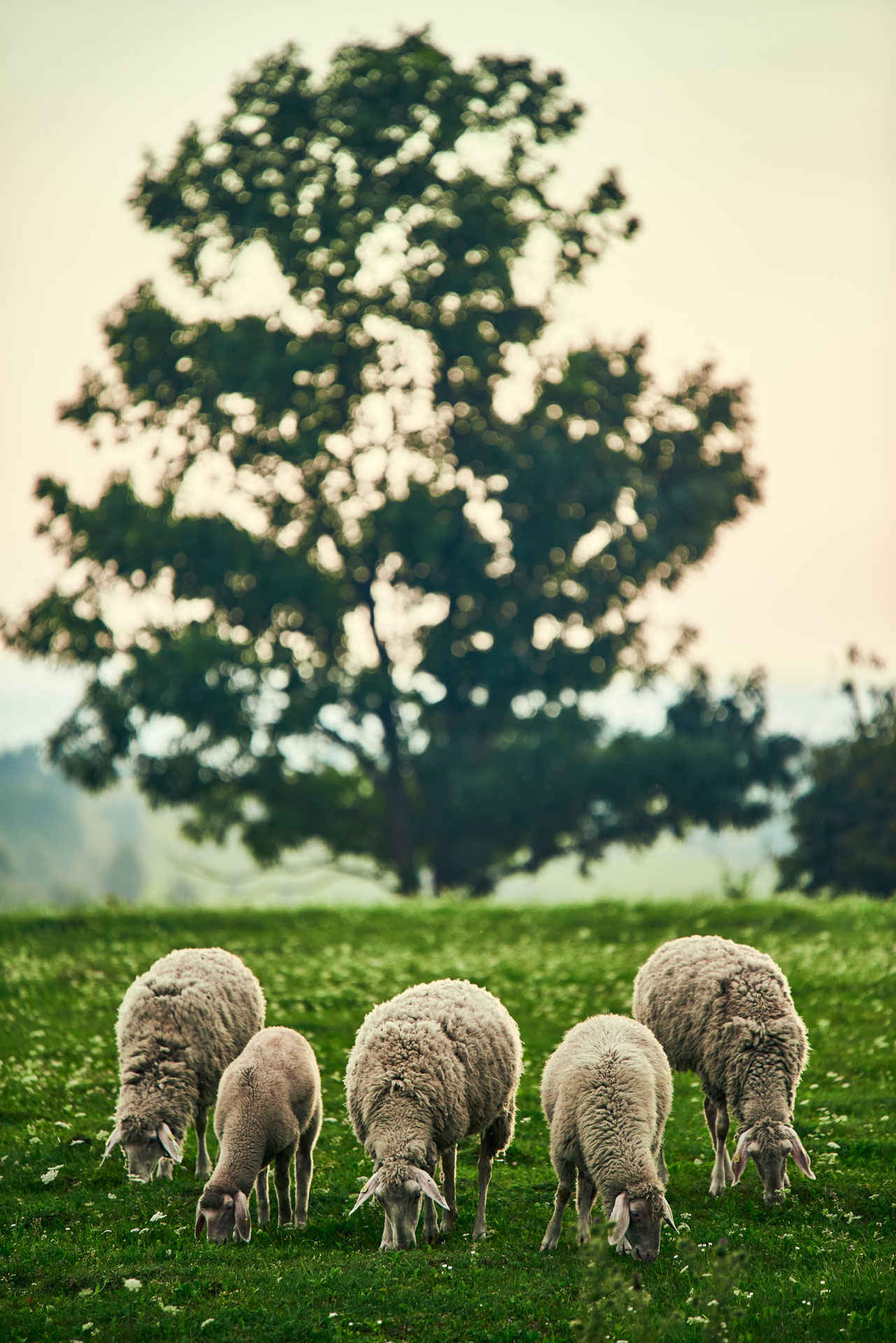
There are also Mangalica pigs (а Hungarian breed of domestic pig with a thick, woolly coat – transl.) at the farm. Dmytro says it’s mainly an attraction for tourists who haven’t seen such animals before.
— Once we saw these curly pigs. It’s quite an original creature: low-maintenance, lives outside. Children, especially the ones from the city, have never seen such pigs and have no idea that they exist. So it’s sort of like an exhibit at a zoo.

Austrian stele, berries, and “Green sneakers”
Apart from the landscapes of the Povcha Upland, another advantage of the Kasen hamlet is its excellent location, which fits into the tourist routes of the region. Just two and a half kilometers away, there is an “Austrian Stele” stone monument, which was built by Austrians to commemorate the victory over Russian troops during the First World War. 20 km from the estate are the Tarakaniv Fort and the Dubno Castle. Victoria and Dmytro say they hold thematic excursions for children and adults in the farmstead territory.
— We created a “ Growing a coat in a meadow” tour for children. We show kids around our sheep farm all year round, taking them through the whole process from a lamb to the sheep wool products.
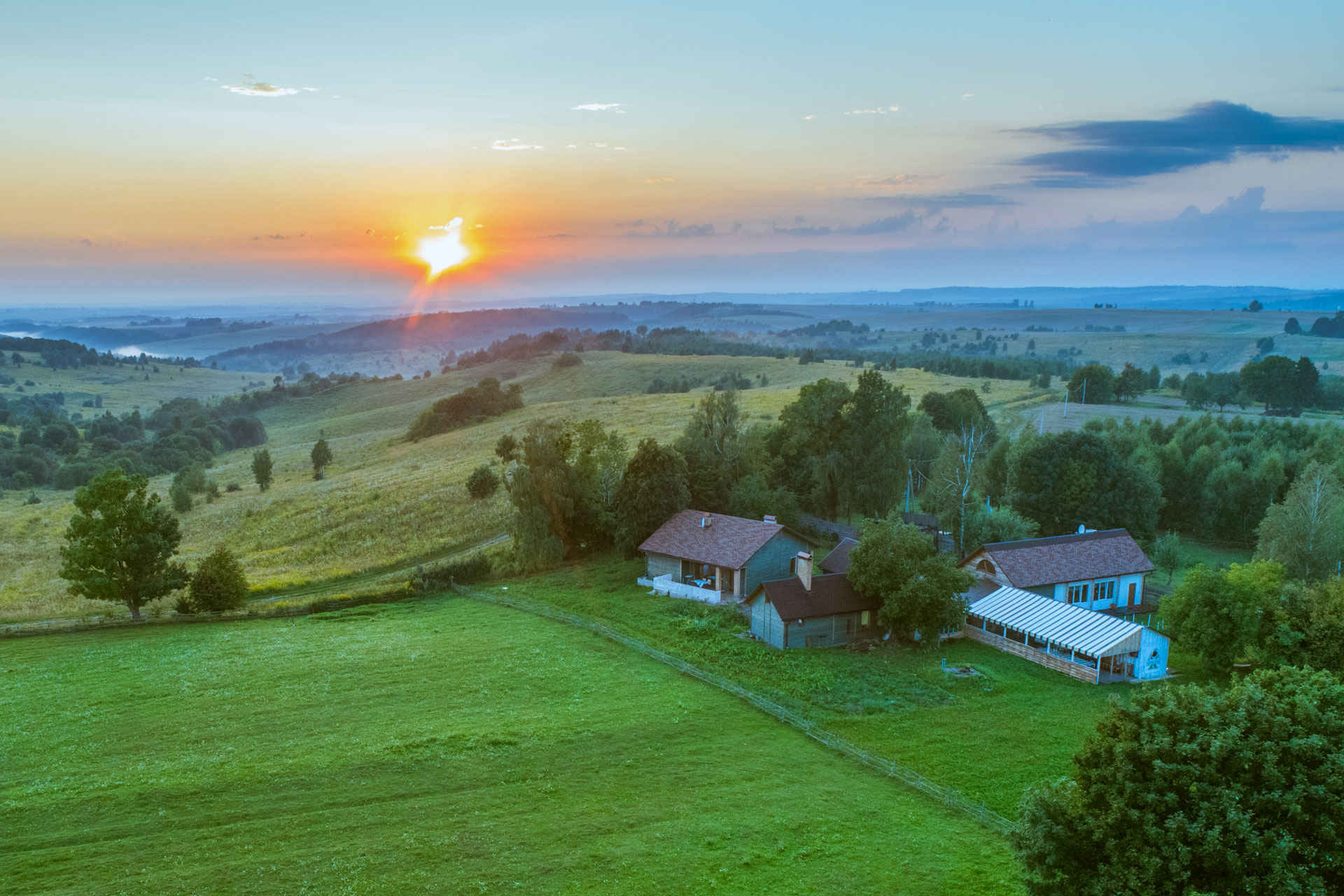
The Kasen hamlet is situated near the forest. Tourists go there walking and hunting for great photos, to pick mushrooms and berries, ride bicycles, etc. The farm owners say there are many medicinal plants as well as wild strawberries growing around here.
— We have a steam bath with Tibetan salt and a pool in the farm territory. We collect and dry herbs for tea and pack them as souvenirs for tourists. We hold excursions, celebrations for children. On December 19 each year we create a Sviatyi Mykolai (Saint Nicolas) residence here. Children visit the farm and take part in the master classes in “Maisternia dobra” (Workshop of goodness).
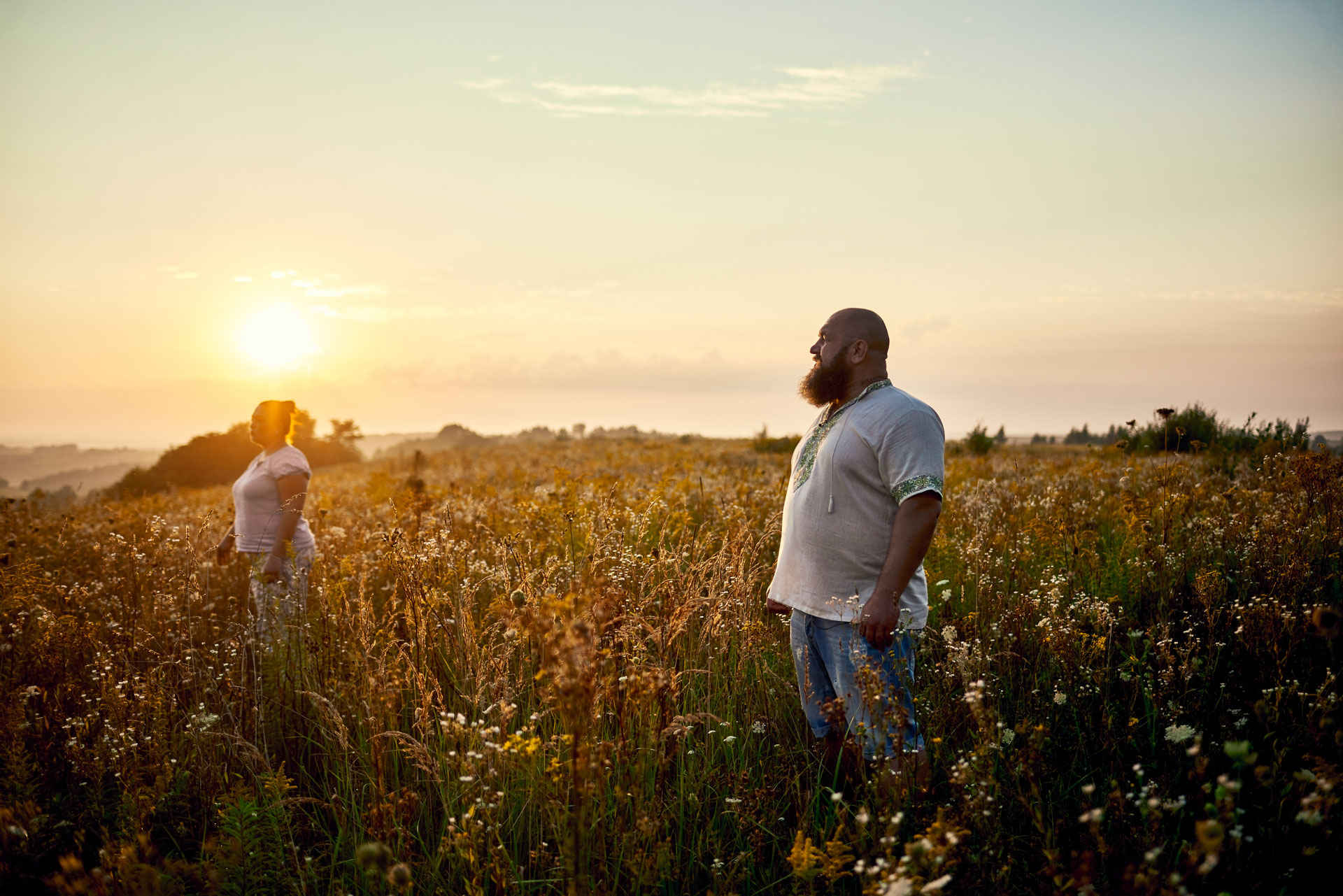
Every year, Dmytro and Victoria Radchuk organize the “Zeleni kedy” (Green sneakers) festival here. It’s a tourist picnic, devoted to cycling and green tourism development. The picnic participants spend a few days camping, doing sports, taking part in workshops, watching open-air movies, etc. There is also a stove where Dmytro, a professional chef, prepares dishes for the guests.
— Green is the color of life and nature, and sneakers represent tourism and sport. During our festivals, we cook with natural products in the stove. We spread bales and invite people. Some Ukrainian musicians and bands perform their concerts here. At the picnic, everything goes in a slow free style: people rest, sunbathe on mats, eat, listen to music – have fun.
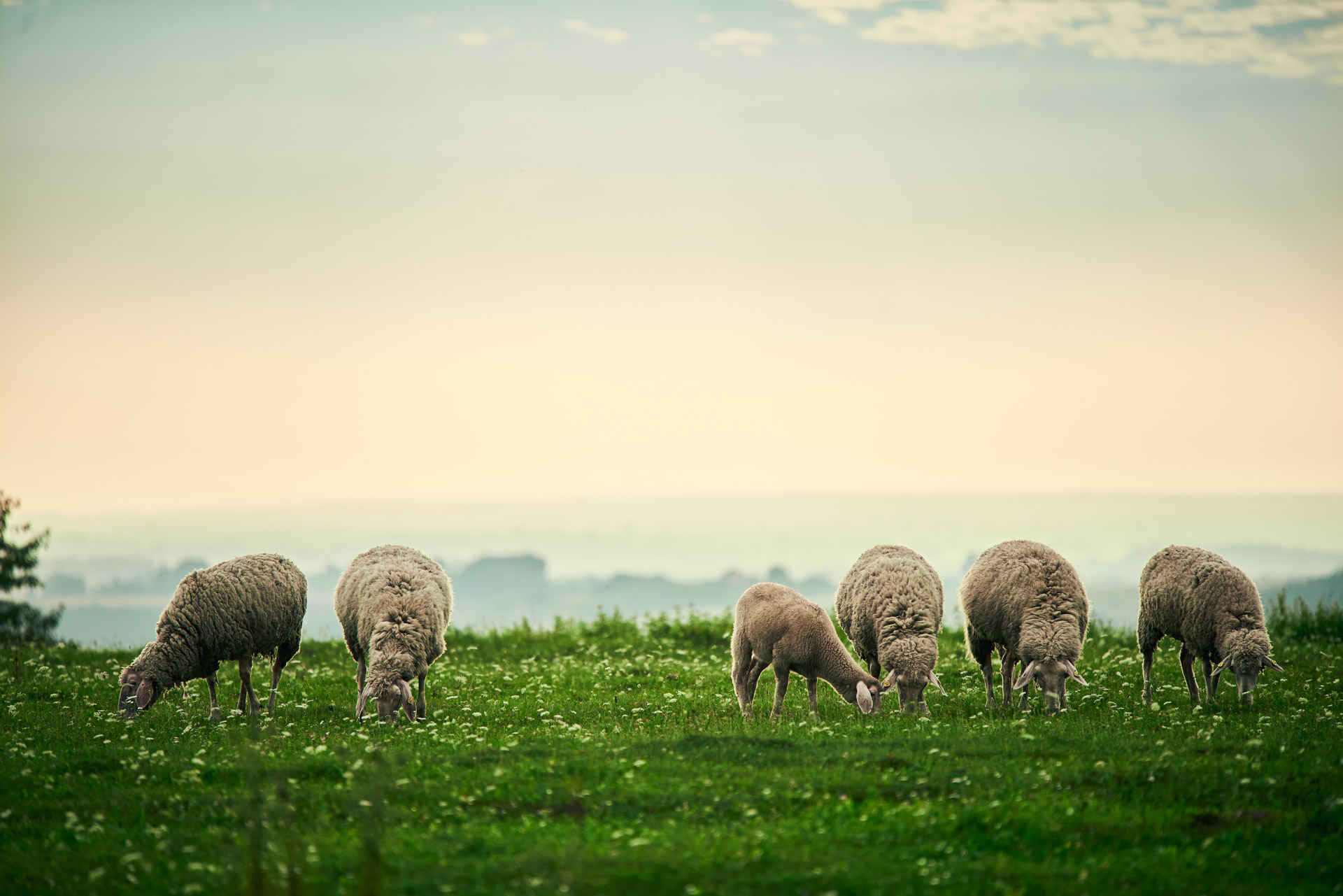
The Kasen hamlet with its beautiful landscapes attracts both outdoor recreation lovers and active sport tourists. There is outdoor running in the natural landscape and bicycle races held near the farmstead. Victoria and Dmytro say that sports clubs approach them with proposals to organize a sports camp in the farm territory. The Kasen hamlet is part of a few tourist routes. For instance, visiting farm is included in the beloved “From count to shepherd” cycling route, starting in the Khodkevych counts’ palace at the village of Mlyniv.
Victoria says she and Dmytro have no regrets about moving here from the big city. The decision to move to the countryside and begin farming was made on a whim and without a second thought. Despite the tough working life of farmers, who work 24 hours a day, they have no intention to return to the city.
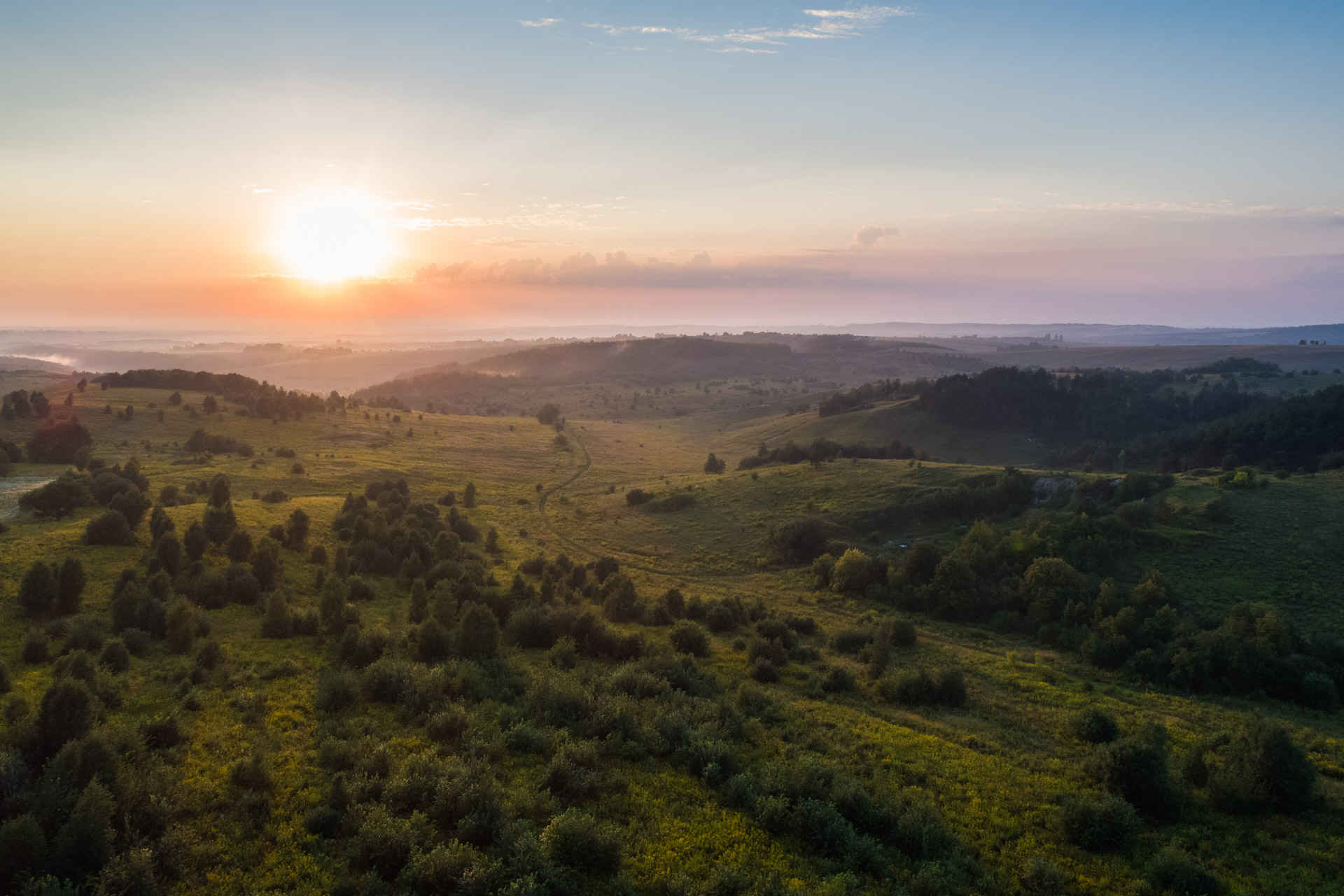
— We see when people come to us, they really like it. They rest, recharge with the energy of this place and our labor. Actually, rural green tourism is a great concept. The work is not easy but it’s very interesting. We haven’t run out of our battery so far. And I hope we’ll keep on doing this.


